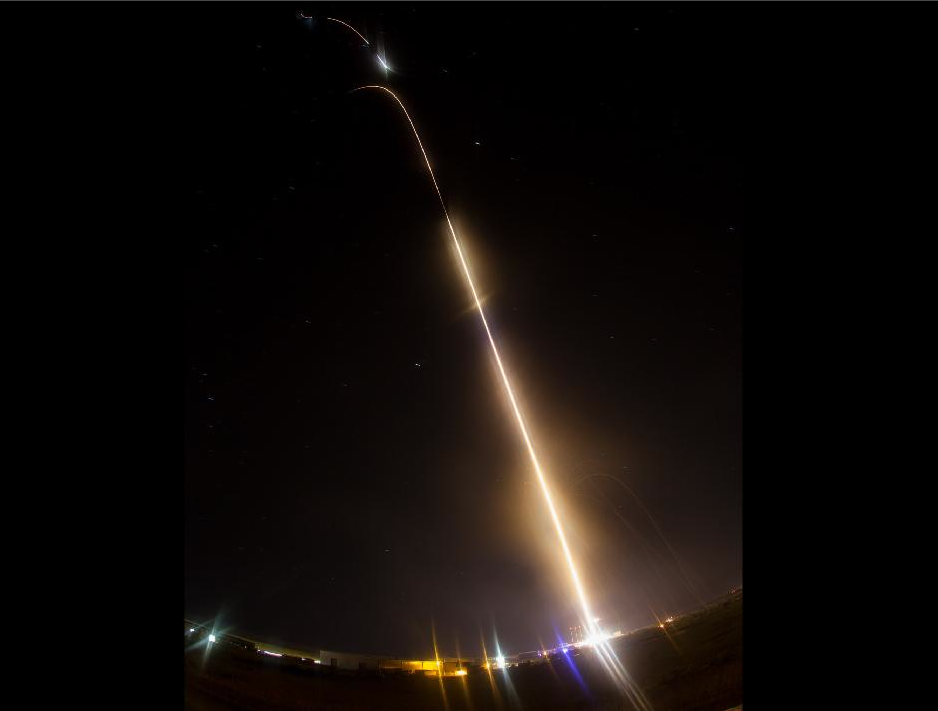
A NASA Black Brant XII suborbital rocket streaks into the night sky following its launch at 11:05 p.m. EDT on June 5, 2013 from the Wallops Flight Facility in Virginia. The rocket carried the Cosmic Infrared Background ExpeRiment (CIBER) to an altitude of approximately 358 miles above the Atlantic Ocean by the four-stage rocket. The launch, seen here with multiple stages firing off, was reportedly seen from as far away as central New Jersey, southeastern Pennsylvania and northeastern North Carolina. With CIBER, scientists are studying when the first stars and galaxies formed in the universe and how brightly they burned their nuclear fuel.
Jamie Bock, CIBER principal investigator from the California Institute of Technology, said, “The first massive stars to form in the universe produced copious ultraviolet light that ionized gas from neutral hydrogen. CIBER observes in the near infrared, as the expansion of the universe stretched the original short ultraviolet wavelengths to long near-infrared wavelengths today. CIBER investigates two telltale signatures of first star formation—the total brightness of the sky after subtracting all foregrounds, and a distinctive pattern of spatial variations.”
Image Credit: NASA/Jamie Adkins
CIBER (The Cosmic Infrared Background Experiment) is a sounding rocket payload designed to characterize the near infrared (IR) background light. CIBER is built by an international collaboration of Universities and Government Laboratories which has flown twice and, having acquired a data set which is not possible from other platforms, will soon shed new light on the nature of the Cosmos.
The Extragalactic Infrared Background (EBL) is the integrated light from all of the infrared sources in the Universe. In the near IR, these photons are produced by stars are a by-product of nucleosynthesis. Measurement of the near IR EBL therefore a constrains the stellar content of the Universe.
CIBER is composed of three instruments, each with different science goals, but all measuring some aspect of the near IR background.
The Imagers search for fluctuations arising in the near IR EBL from the first generation of stars and galaxies in the Universe.
The Low Resolution Spectrometer measure the color of the near IR EBL, thereby constraining the stellar content of the Cosmos.
The Narrow Band Spectrometer determines the brightness of the Zodiacal Light, which is due to dust in the solar system reflecting the light from the sun.

